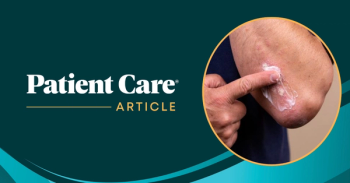
Lichen Planus: Quick Tips
A 27-year-old man presented with intensely pruritic, violaceous, flat-topped papules on the lateral aspect of his left leg. He reported that the lesions developed a few weeks after the area was severely scraped in an accident several months earlier.
A 27-year-old man presented with intensely pruritic, violaceous, flat-topped papules on the lateral aspect of his left leg. He reported that the lesions developed a few weeks after the area was severely scraped in an accident several months earlier.
The patient had a history of alcohol abuse. He denied medication use except for a course of griseofulvin, which failed to cure the lesions or ease the itch. No other abnormalities were noted in the history or examination.
Dr Chris O. Harper of Warrior, Ala, writes that biopsy results confirmed the suspected diagnosis of lichen planus. Lichen planus is usually an idiopathic, inflammatory, pruritic disease that is characterized by distinctive papules, which have a predilection for flexor surfaces, mucous membranes, genitalia, and the trunk. The differential diagnosis includes psoriasis, lichen simplex chronicus, and syphilis. Mucous membrane involvement in lichen planus must be differentiated from leukoplakia.
Clusters of lesions in a streak distribution can occur in an area of prior trauma (Koebner phenomenon). Drug reaction is another cause of lichen planus; common culprits include NSAIDs, gold, tetracycline, quinidine, antimalarial agents, phenothiazines, and hydrochlorothiazide. The disorder also has been associated with exposure to color film developing solution. A relationship between hepatitis C and erosive or ulcerative lichen planus may exist.
Treatment consists of a superpotent topical corticosteroid, such as betamethasone dipropionate, applied twice daily or at bedtime and wrapped with plastic film. Applications of tretinoin cream, 0.05%, followed by a corticosteroid ointment may be helpful for mucosal lesions.
Disabling hypertrophic lichen planus of the soles or palms can be treated with nightly applications of tretinoin cream that is covered with thin, pliable polyethylene film. Oral corticosteroids, isotretinoin, etretinate, psoralens plus long-wave UV-A, or dapsone may be required for severe disease. However, relapse of severe disease almost always occurs when treatment is reduced or discontinued.
This patient's lichen planus responded to a regimen of betamethasone dipropionate covered with plastic wrap.
Newsletter
Enhance your clinical practice with the Patient Care newsletter, offering the latest evidence-based guidelines, diagnostic insights, and treatment strategies for primary care physicians.























































































































































































































































































































